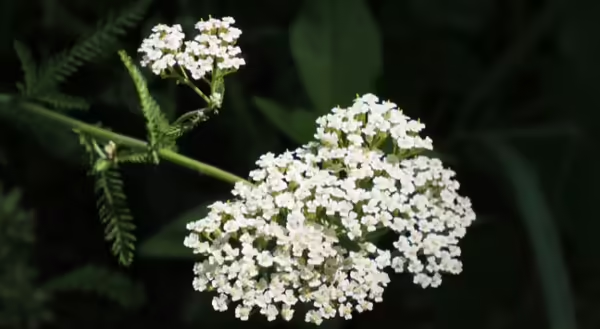
Grow a champion garden with award-winning plants.
A plant showcasing a long season of showy blooms that is also drought tolerant, deer resistant, and visited by native pollinators is a prized addition for any garden. Yarrow, the International Herb Association’s 2024 Herb of the Year, earned the valuable title because it possesses all four qualities. The association selects plants annually that are considered outstanding for decorative, culinary, or medicinal use. While yarrow is not native to Illinois, it is found naturalized on roadsides across the state and is happiest growing in well-drained areas that are full sun.
A heroic plant
While yarrow has several common names, such as old man's pepper, devil's nettle, milfoil, soldier's woundwort, and thousand seal, its botanical name, Achillea, was derived from the Greek mythology war hero, Achilles, who, legend has it, used the yarrow leaves to stop bleeding and heal wounds during battle.
Attractive foliage and flower
Its long bloom season (from June to September) and distinct gray fern-like, hairy foliage make yarrow a valuable plant for the garden. Although yarrow is a relatively short garden plant, reaching two to three feet tall and wide, the stems are known to flop over in hot, humid conditions, or when grown in overly wet or fertile soils. To keep plants more compact, cut back in May before flowers develop or select a cultivar bred for strong stems and compact habit.
Adaptable to many gardens
Plants are easily divided and replanted every three years to maintain healthy growth and flower production. Yarrow plants can be aggressive in the garden, spreading by rhizomes (horizontal underground plant stem), or self-seeding, which can develop into large, naturalized clumps in a garden, if left unchecked. With their quality to colonize, these plants make a great addition to rock gardens, cottage gardens, naturalized areas, or as a ground cover.
Colorful flowers for you and pollinators
Common yarrow has tiny white flowers in large, flattened clusters, but new cultivars come in a rainbow of colors, including pink, red, cream, yellow, and bi-color pastels. The pleasant, spicy fragrance attracts a variety of pollinators to the plant; it is a favorite of bees, wasps, butterflies, and moths. To extend the bloom season of yarrow, cut back the plant to the next flower bud after the initial flowers fade, this encourages more blooms while keeping plant growth tidy.
A symbol of well wishes
In the language of flowers, a cultural trend to convey messages and emotions in the Victorian era, yarrow symbolized healing and love, making these a perfect gift when offering wishes of ‘get well soon’ to a loved one. Whether gifted to friends or kept for the home, the umbel-shaped flower clusters add dimension and color to cut floral arrangements and the flowers remain beautiful and vibrant when dried.
Find more Plants of the Year
For more tried and true garden selections, consider past International Herb Association Plants of the Year: ginger (Zingiber officinale), violas (Viola sp.), parsley (Petroselinum), anise hyssop (Agastache ssp.), coriander/cilantro (Coriandrum sativum), and savory (Saturea ssp.) Garden and plant associations use rigorous criteria to recognize favorite and dependable plant selections; select a few winners for your garden to make it a champion of beauty and dependability.
ABOUT THE AUTHOR: Brittnay Haag is a horticulture educator with University of Illinois Extension, serving Livingston, McLean, and Woodford Counties. Her work focuses on youth horticulture education, specifically through school gardens and Jr. Master Gardener programs. Brittnay provides leadership for three county Master Gardener programs and is responsible for developing community programs and providing expertise in horticulture and environmental sciences.
ABOUT THE EDITOR: Liz Repplinger is an agriculture and natural resources program coordinator serving Livingston, McLean, and Woodford Counties. A Bloomington-Normal native, Liz earned a B. A. and M.S. in Animal Science from Illinois State University. She has enjoyed contributing to the multiple facets of Extension including previous support of the 4-H Youth Development Program as a program coordinator and current support of Unit and Statewide Diversity, Equity and Inclusion Initiatives.